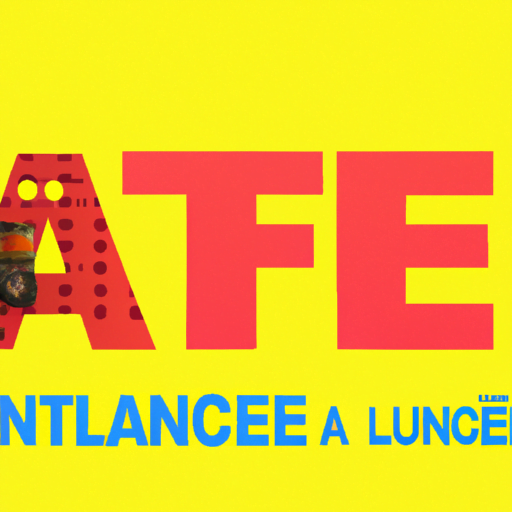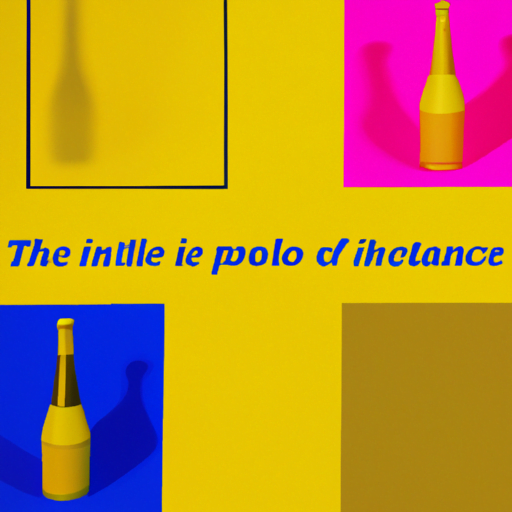
-
Table of Contents
- The Influence of Typography in Art and Illustration
- The Power of Typography in Visual Communication
- The Historical Influence of Typography in Art
- The Role of Typography in Illustration
- The Impact of Digital Typography
- Case Studies: Typography in Art and Illustration
- Case Study 1: Barbara Kruger
- Case Study 2: Shepard Fairey
- Key Takeaways
- Conclusion
The Influence of Typography in Art and Illustration

Typography, the art and technique of arranging type, has a profound influence on art and illustration. It is not just a means of communication but also a powerful tool for expressing emotions, conveying messages, and creating visual impact. From ancient manuscripts to modern digital designs, typography has played a significant role in shaping the world of art. In this article, we will explore the various ways in which typography influences art and illustration, and how artists and designers have utilized it to create compelling and impactful works.
The Power of Typography in Visual Communication
Typography is an essential element of visual communication. It has the power to evoke emotions, set the tone, and convey meaning. The choice of typeface, font size, spacing, and arrangement can greatly impact the overall message and aesthetic appeal of a piece of art or illustration.
For example, in a poster promoting a music festival, the use of bold, vibrant, and playful typography can create a sense of excitement and energy, reflecting the atmosphere of the event. On the other hand, a minimalist and elegant typeface can convey a sense of sophistication and class in a high-end fashion advertisement.
Typography also helps guide the viewer’s attention and create hierarchy within a composition. By varying the size, weight, and style of the type, artists and designers can emphasize certain elements and create a visual hierarchy that guides the viewer’s eye through the artwork.
The Historical Influence of Typography in Art
The influence of typography in art can be traced back to ancient times. In illuminated manuscripts of the Middle Ages, typography played a crucial role in enhancing the visual appeal and legibility of the text. Scribes meticulously crafted each letter, incorporating intricate details and decorative elements to transform the text into a work of art.
During the Renaissance, typography became even more prominent in art. Artists such as Albrecht Dürer and Leonardo da Vinci used typography in their prints and drawings to add textual elements and enhance the narrative of their works. Typography was not just a means of conveying information but also a visual element that added depth and richness to the composition.
In the 20th century, typography underwent a revolution with the advent of modernism. Artists and designers such as Piet Mondrian and El Lissitzky embraced the use of bold, geometric typefaces and experimented with unconventional layouts. They believed that typography should be integrated into the overall design and not just treated as a separate element.
The Role of Typography in Illustration
Typography plays a crucial role in illustration, helping to enhance the narrative and visual impact of the artwork. It can be used to depict dialogue, convey emotions, and create a sense of atmosphere.
One example of typography’s influence in illustration is the work of graphic novelist Chris Ware. In his graphic novel “Jimmy Corrigan: The Smartest Kid on Earth,” Ware uses typography to depict the inner thoughts and emotions of the characters. By varying the size, style, and arrangement of the text, he creates a visual representation of the character’s mental state, adding depth and complexity to the narrative.
Typography can also be used to create visual puns and play with the viewer’s perception. In the work of artist and designer Stefan Sagmeister, typography is often used in a playful and unconventional way. In his famous poster “Another Self-Portrait,” Sagmeister uses the letters of his name to create a self-portrait, blurring the boundaries between typography and illustration.
The Impact of Digital Typography
The advent of digital technology has revolutionized typography and its impact on art and illustration. With the rise of digital design tools and software, artists and designers have more freedom and flexibility in experimenting with typography.
One of the most significant developments in digital typography is the ability to create custom typefaces. Artists and designers can now create their own fonts, tailored specifically to their artistic vision and the needs of a particular project. This has opened up new possibilities for creative expression and has allowed artists to push the boundaries of typography in art and illustration.
Furthermore, the rise of social media and digital platforms has increased the demand for visually appealing and shareable content. Typography plays a crucial role in creating eye-catching and engaging visuals that stand out in a crowded digital landscape. From Instagram posts to YouTube thumbnails, typography is used to grab the viewer’s attention and convey the message effectively.
Case Studies: Typography in Art and Illustration
Let’s take a look at some case studies that highlight the influence of typography in art and illustration:
Case Study 1: Barbara Kruger
Barbara Kruger is a contemporary artist known for her powerful and provocative works that combine photography, typography, and graphic design. Her works often feature bold, black-and-white images overlaid with red text in a distinctive typeface.
In her piece “Untitled (Your body is a battleground),” Kruger uses typography to convey a feminist message about women’s rights and reproductive freedom. The bold, uppercase text demands attention and confronts the viewer, while the red color adds a sense of urgency and intensity to the message.
Case Study 2: Shepard Fairey
Shepard Fairey is a street artist and graphic designer known for his iconic “Hope” poster featuring Barack Obama during the 2008 presidential campaign. Fairey’s works often incorporate typography, blending it seamlessly with his illustrations.
In the “Hope” poster, Fairey uses a bold, sans-serif typeface to spell out the word “Hope” at the bottom of the composition. The typography adds a sense of optimism and reinforces the message of the artwork. The poster became an iconic symbol of Obama’s campaign and the power of visual communication.
Key Takeaways
- Typography is a powerful tool in visual communication, influencing the overall message and aesthetic appeal of art and illustration.
- Typography has a rich historical influence in art, from illuminated manuscripts to modern digital designs.
- Typography plays a crucial role in enhancing the narrative and visual impact of illustration.
- Digital typography has opened up new possibilities for creative expression and customization.
- Case studies of artists such as Barbara Kruger and Shepard Fairey demonstrate the impact of typography in art and illustration.
Conclusion
Typography is not just a tool for conveying information; it is a powerful element of visual communication that can evoke emotions, convey meaning, and create visual impact. From ancient manuscripts to modern digital designs, typography has played a significant role in shaping the world of art and illustration. Artists and designers continue to push the boundaries of typography, using it to enhance the narrative, create visual puns, and engage the viewer. As technology advances, typography will undoubtedly continue to evolve and influence the world of art and illustration.
